
The State Academic Chapel (the Chapel of St. Petersburg) is a modern multi-cultural complex, which is the oldest domestic professional musical institution in Russia.
The chapel is located in the historical center of St. Petersburg and includes a complex of buildings with courtyards, stretching for a whole block - from the Moika River to Bolshaya Konyushennaya Street.
Today, concerts, festivals and exhibitions are held in the halls of the Chapel, as well as excursions around the historical building.
The chapel is also famous for its historical organ.

The complex of historical buildings of the Chapel occupies a wedge-shaped plot starting from the Moika River (Moika River Embankment, 20) and narrowing to Bolshaya Konyushennaya Street, 11.
However, it should be noted that not all historical buildings now belong to the Chapel - many former squares of the Imperial Chapel are now located: housing, restaurants, galleries, a hotel, etc.
The entire territory of the Chapel is divided by transverse buildings into four passageways. In addition, there are two more side courtyards inside the residential wings facing the Sink and two light ones.
The main entrance to the Chapel is located on the side of the Sink. Two residential buildings overlook the Moika Embankment, the passage between them leads to the front yard. At the back of the courtyard there is a concert hall of the Chapel and the Royal Pavilion attached to it.


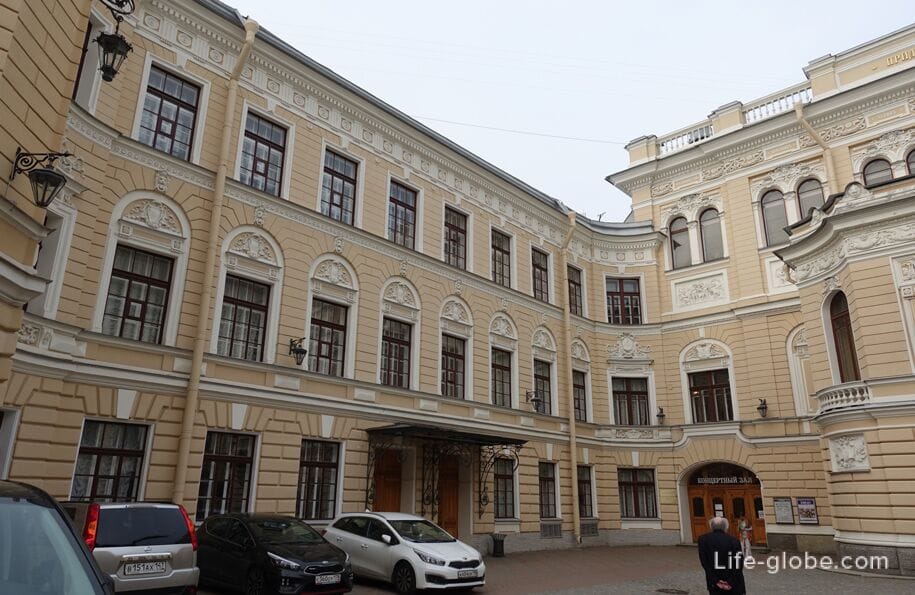
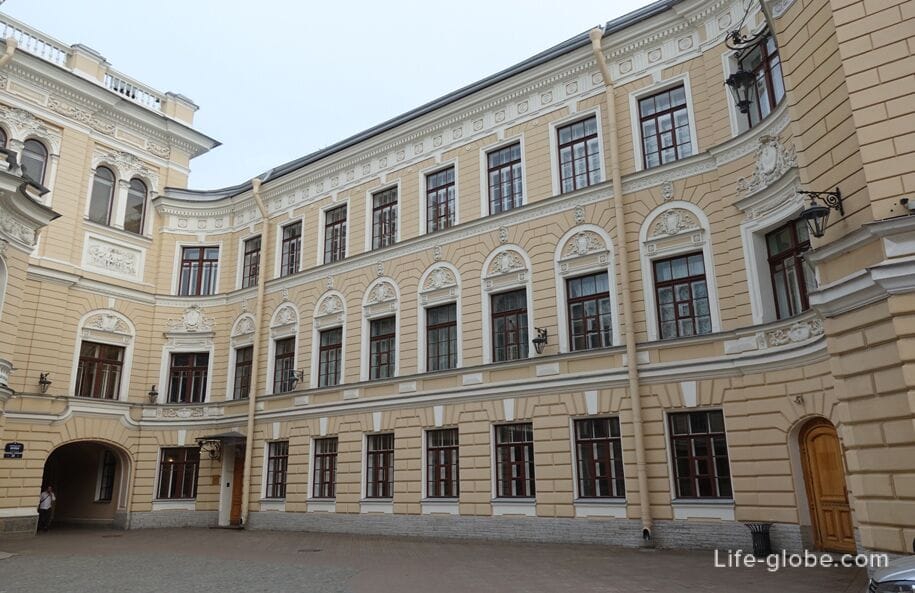
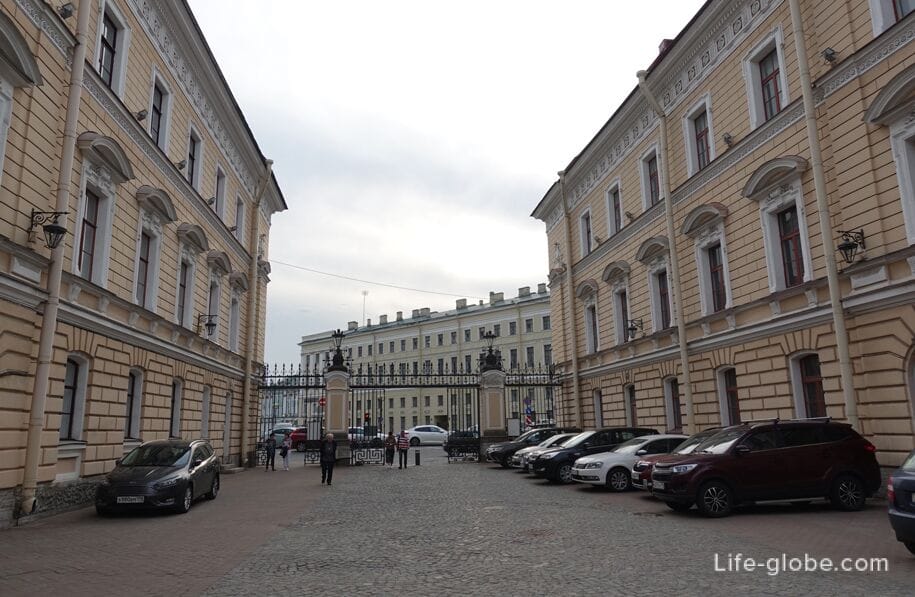
Behind the main courtyard there are several more courtyards of the Chapel, which are connected to each other.
There are, among other things, an art gallery and the 3-star hotel Dvory Kapella with a cafe, free Wi-Fi, room service, as well as air conditioning and tea/coffee making facilities in the rooms. Link to the hotel
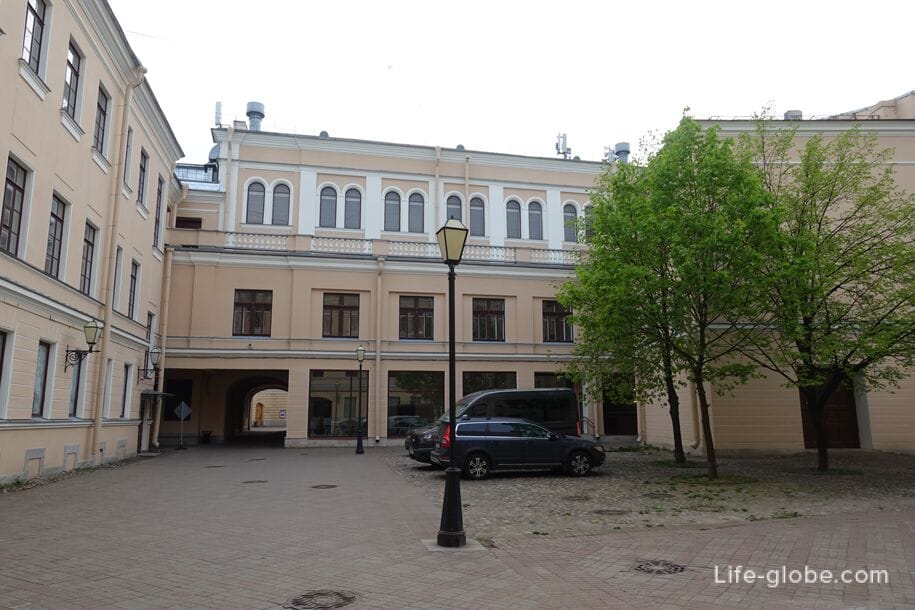
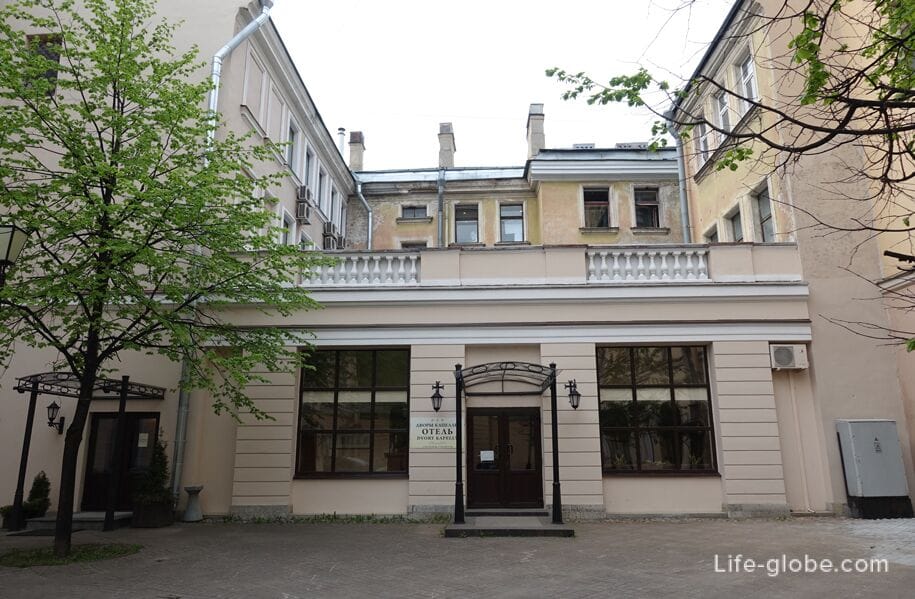
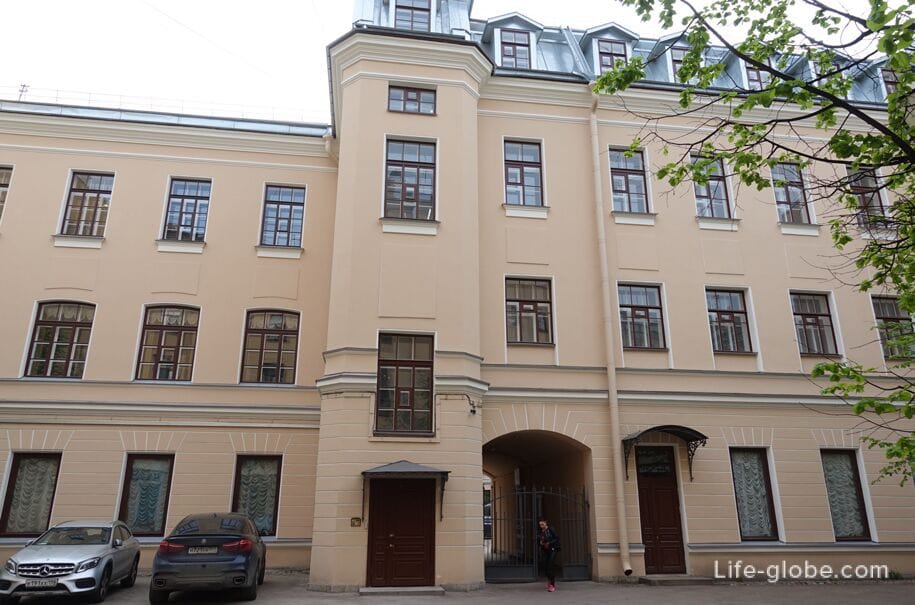
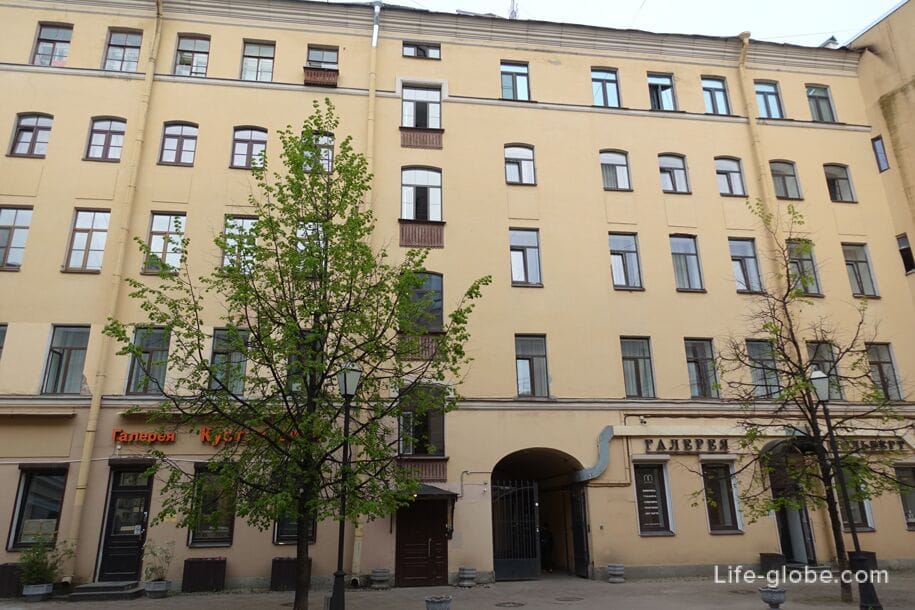
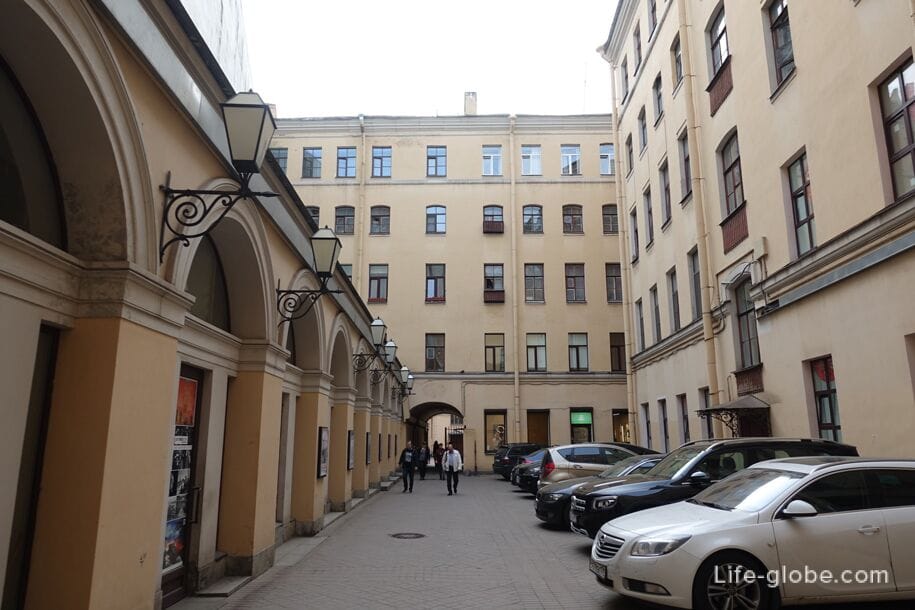
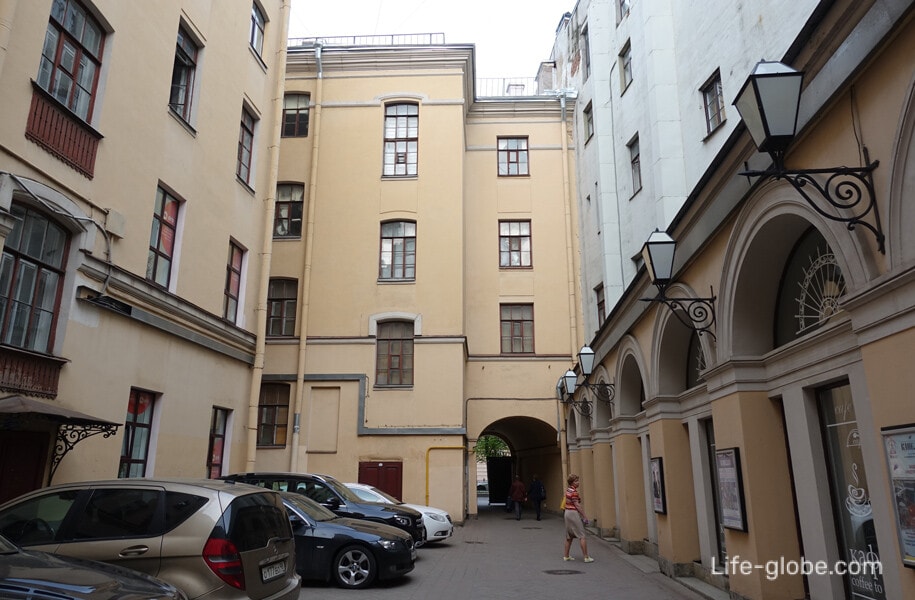
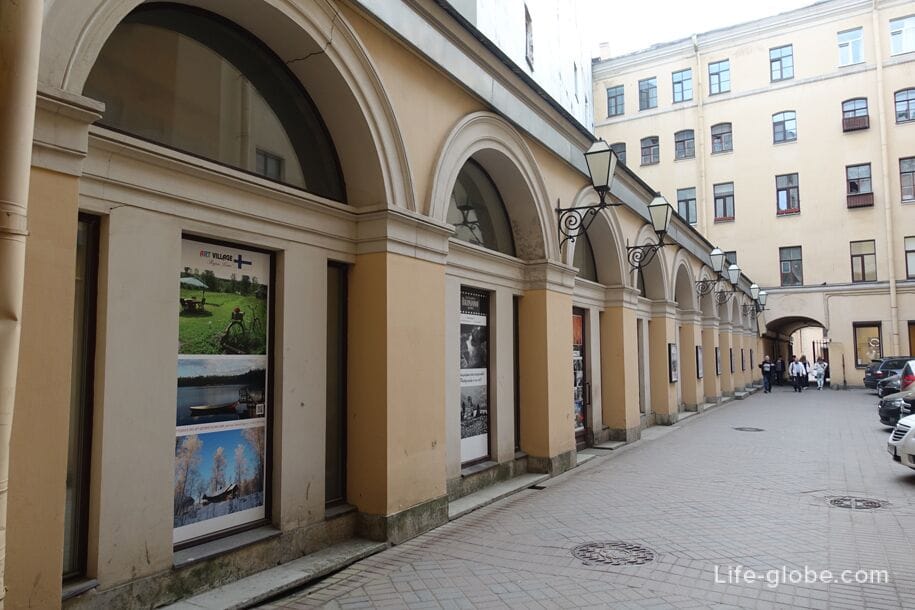
They lead the courtyards of the Chapel, through the arch, to Bolshaya Konyushennaya Street.

Entrance (passage) to the courtyards of the Chapel is free (free).
In the architectural ensemble of the Chapel, the central place is occupied byThe concert hall, built in 1889 by the architect Leontius Benois during the major reconstruction of the Chapel buildings.
The hall is distinguished by excellent acoustics and decoration. All the stucco works of the hall were made by the master I. P. Dylev.
The entrance to the hall is possible from the main courtyard of the Chapel.
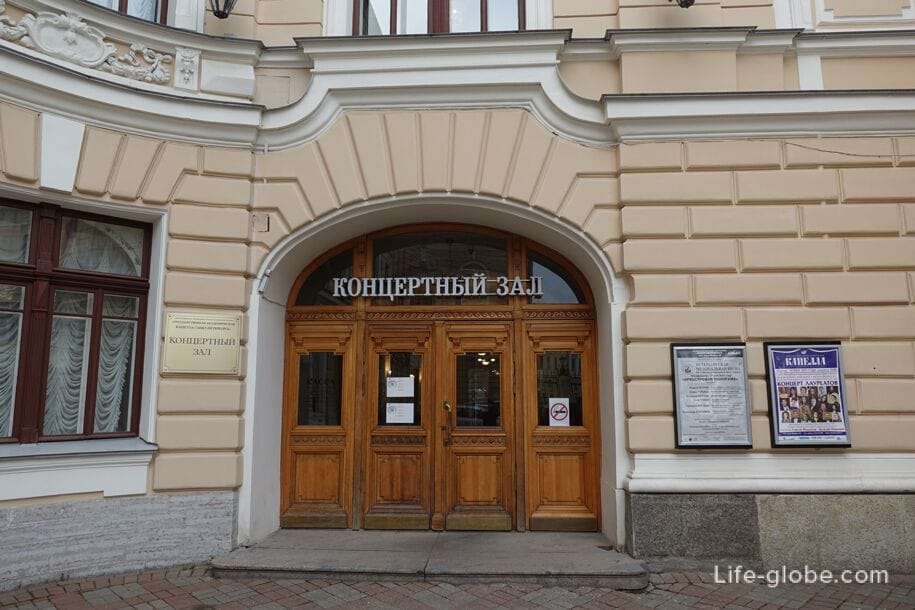
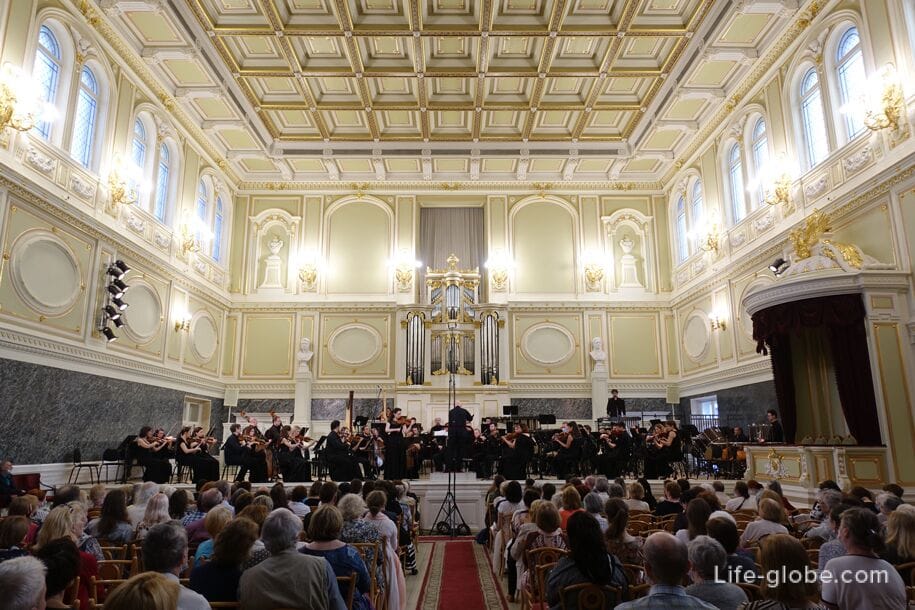
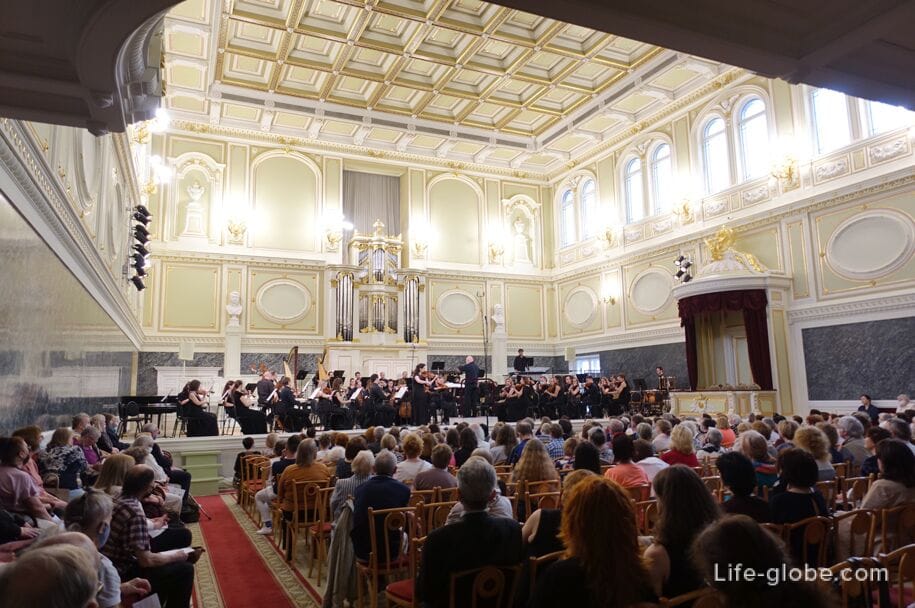
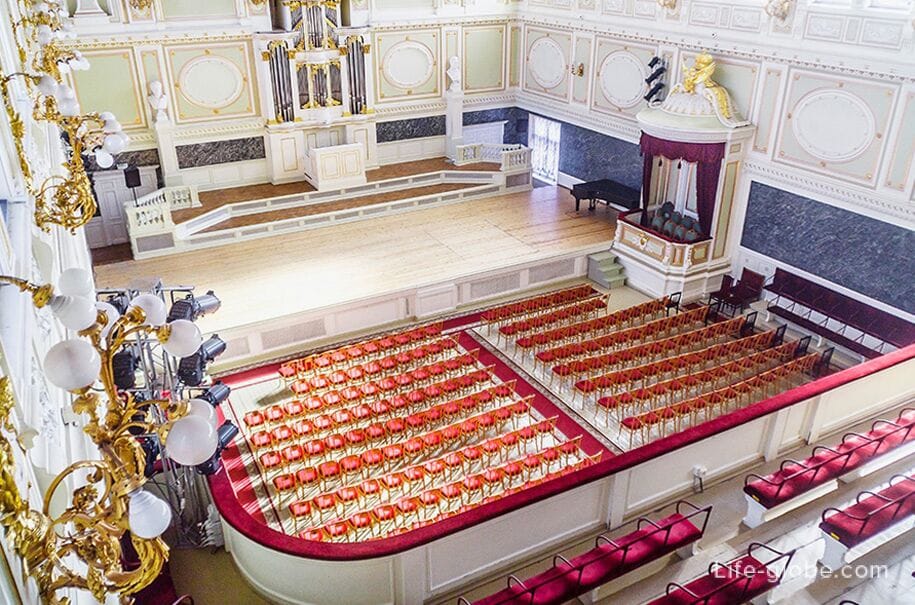
The former royal box attracts special attention in the concert hall of the Chapel.
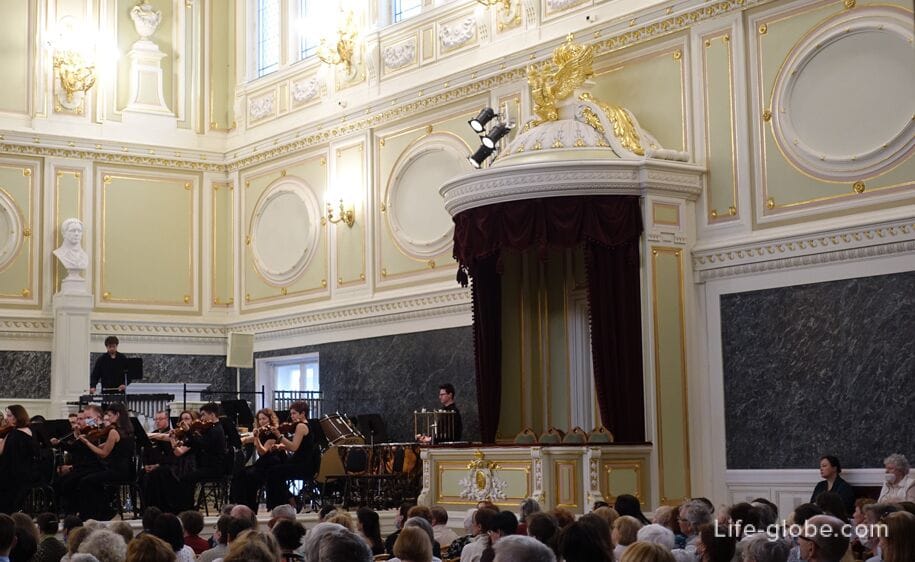
The highlight of the Concert Hall is the organ, made in 1891 by the German company Walcker and which in 1927 was transferred to the Chapel from The Dutch Reformed Church in St. Petersburg.
This organ is an invaluable historical instrument-a monument.
During the history of the organ, as well as the Chapel hall, was restored. Now the organ has mechanical, pneumatic, electrical and electronic elements in its composition. It has 57 registers, 3 manuals, more than 4500 pipes. The main core of the Walker sound has been preserved, and, in addition, a number of new timbres have been added.
The facade of the organ is the oldest preserved in Russia and is considered a monument of decorative and applied art.

Concerts and festivals are held in the Concert Hall.
Also in the walls of the Chapel there is The chamber hall, which was opened in 2008.
The Chamber Hall hosts performances by leading soloists of the Choir and Symphony Orchestra of the St. Petersburg Chapel, the Chamber Orchestra of the Chapel, concerts of ancient and modern chamber music, jazz, folk music, solo concerts of young St. Petersburg musicians, thematic, musical, literary, anniversary evenings, experimental concerts, solo performances, creative meetings, scientific and practical conferences and press conferences.
Educational concerts for schoolchildren are also regularly held in the hall.
The capacity of the Chamber Hall is 80 seats.
The entrance to the hall is possible from the main courtyard of the Chapel.
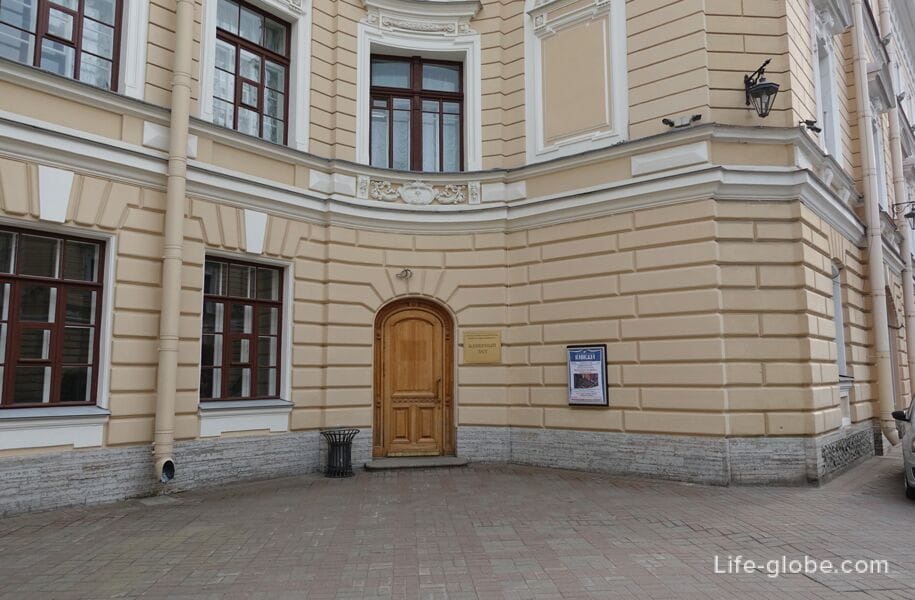
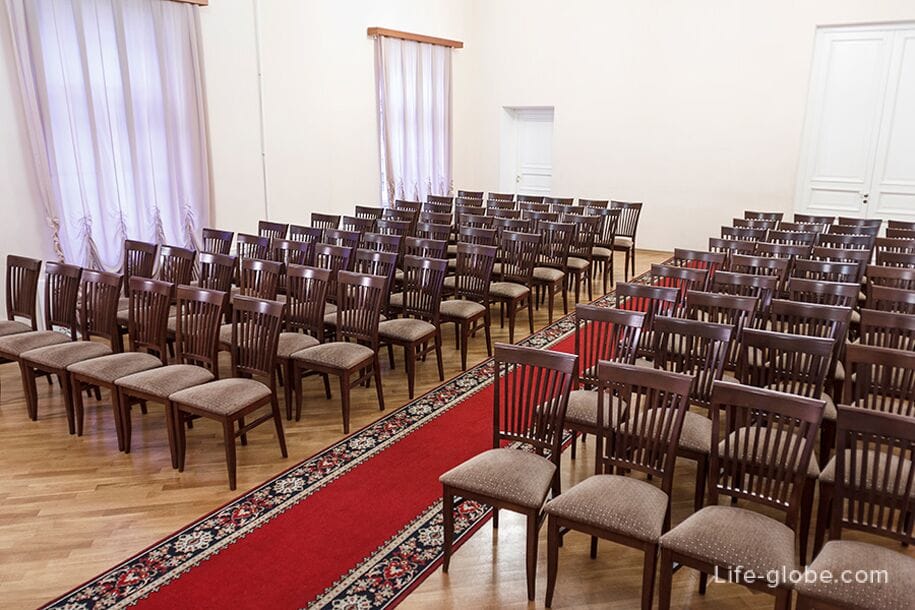

You can visit the halls of the Chapel by buying a ticket for a concert or event. Throughout the year, the Chapel hosts free concerts and events for everyone.
The chapel also hosts festivals, exhibitions and tours of the historic building.
So there is a historical tour of the Chapel and a children's quest tour.
The Chapel of St. Petersburg conducts excursions for organized groups at any time by prior arrangement. Excursions include a tour of the complex of historical buildings (Concert and Chamber halls, courtyards), exhibitions located in the Chapel gallery, and, if possible, a visit to the rehearsal of the Choir and Symphony Orchestra. Also during the excursions, you can see places that are usually inaccessible to the audience: the Royal Pavilion, the royal box and the backstage.
The address of the State Academic Chapel in St. Petersburg: Moika River Embankment, 20.
You can buy tickets for concerts, festivals and exhibitions held in the Chapel at the ticket offices located directly in the main building of the Chapel or online in advance-on the official website.
You can find out about excursions, get acquainted with the Chapel's poster and clarify other organizational details on the official website of the State Academic Chapel: capella-spb.
Nearest metro stations: "Admiralteiskaya", "Gostiny Dvor" and "Nevsky Prospekt".
All accommodation facilities in St. Petersburg, including in the city center, near the Chapel and more remotely from those, can be viewed and booked here
The date of birth of the Chapel is considered to be August 12, 1479, when the choir of the Sovereign choristers of the deacons, founded by the Grand Duke of Moscow Ivan III, took part in the consecration service of the Assumption Cathedral - the first stone church of the Moscow Kremlin. Then the singers were constantly with the sovereign and participated in various events of the court: divine services, accompanying the sovereigns on pilgrimage, guest visits, military campaigns, ceremonial receptions and dinners, etc. Initially, the choir consisted only of men, but since the middle of the 17th century, boys have appeared in the choir.
In 1701, Peter I renamed the choir of the Sovereign's singing Clerks into the Court Choir.
On October 15, 1763, the Court Choir was renamed by Catherine II into the Imperial Court Singing Chapel.
In 1808, on the initiative of the then director of the Chapel - Dmitry Stepanovich Bortnyansky, a plot of land with two houses, a large garden and a courtyard between them was purchased for the Chapel in the center of St. Petersburg. This is the place where the State Academic Chapel complex is located today.
After the renovation carried out by the architect L. I. Ruska, on November 1, 1810, the buildings were occupied by singers, where they lived and worked. In 1830-1889, according to the project of Leonty Nikolaevich Benois, the buildings of the chapel were completely restored and rebuilt, including buildings were added, residential buildings were built, a new fence was created from the Moika River and the now famous Concert Hall of the Chapel was built. In the future, the superstructures continued, as a result of which almost all the buildings of the Chapel became three-storied.
In 1846, regent classes were opened at the Chapel to train the leaders of church choirs. Since 1858, the work of orchestra classes has finally been established in the Chapel.
After the October Revolution of 1917, the structure of the Chapel underwent a change. So the regency classes and the gentry corps were canceled, where boys who "slept with the voice" were taught theatrical skills. Subsequently, the symphony orchestra, which became the basis of the first Soviet philharmonic society, and then the school (Choral School) was withdrawn from the structure of the Chapel.
In 1918, the chapel was renamed the Petrograd Folk Choral Academy. In 1921, the Petrograd State Philharmonic was founded on the basis of the Court Choir and Orchestra.
The Great Patriotic War again demolished the adjustments and changed the nature of the Chapel's activities. Some of the choir's artists went to the front; the remaining staff and its choral school were evacuated to the Kirov region in 1941.
In November 1944, the Chapel returned to Leningrad and its "second" revival began in the city on the Neva.
Thus, during its long activity, the Chapel was the most important source of musical education in Russia and a major professional school that educated many generations of conductors, composers, singers and performers on orchestral instruments.
Today, the St. Petersburg Chapel is the oldest Russian professional musical institution, which determined the formation and development of the entire Russian professional musical culture, where for the first time in Russia all the main directions of musical performance and musical education consistently emerged.